A crowd-funded University research team is taking a closer look at pet food to figure out just how much methylmercury, the toxic mercury compound that can have negative health impacts, is in what our pets eat. They're also checking if the ingredients listed on the label match what's actually in the food, and they're sharing what they find with the public.
Mae Sexauer Gustin
Professor, Department of Natural Resources & Environmental Science
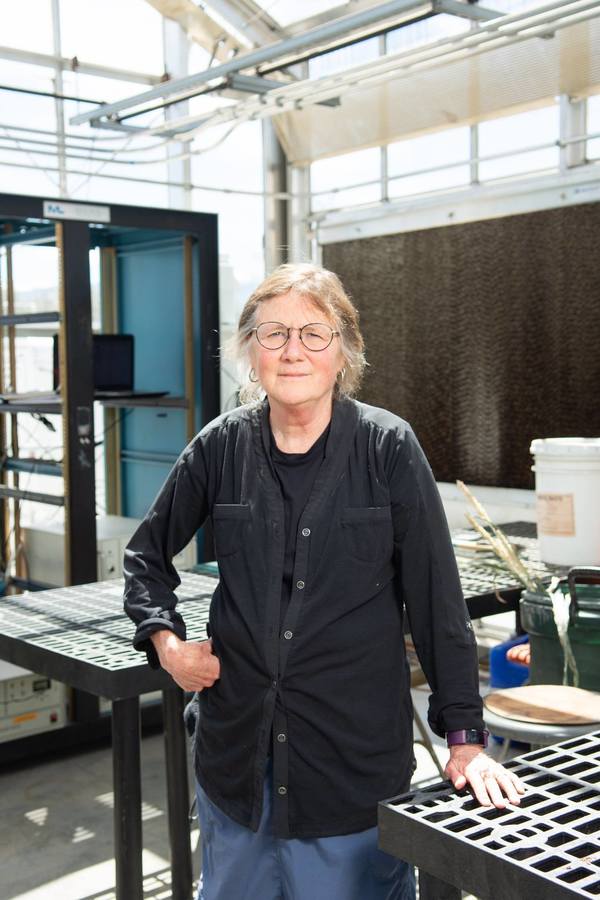
Mae in the greenhouse where she works with samples for her mercury in the environment research.
What is your contribution to the project?
I manage those working on the project, oversee quality control and data collection, and work on data presentation and publication.
Why are you interested in working on this project?
We as humans often are exposed to unknown contaminants in our food. Animals are even more susceptible to contaminants in food because they are fed the same food daily. I think it is important for people to know that the foods they are feeding their animals are safe.
I first initiated this study with an undergraduate student just to see if mercury concentrations in pet food were of concern. I do research primarily on mercury in the environment. In addition, my job is to educate students, and this project was and is relevant and engaging, and provides a framework within which a student can do meaningful research. The first undergraduate research project showed that some pet foods had concentrations above thresholds considered safe for humans and wildlife. It is important to understand the chemical form of mercury in food. Some forms are more toxic than others. This project will provide a framework for understanding the chemical form of mercury in pet food and also through genetic analyses determine what are the sources of the mercury. This information is important for manufacturers of pet food as well as for pet owners. In addition, there is little testing of pet food. We are interested in understanding if the label actually reflects the constituents.
What is your favorite animal?
Tough question… I like animals in general… I have had a horse, several cats, and 5 dogs throughout my lifetime.
Lindsay Chichester
Extension Educator, University of Nevada Cooperative Extension
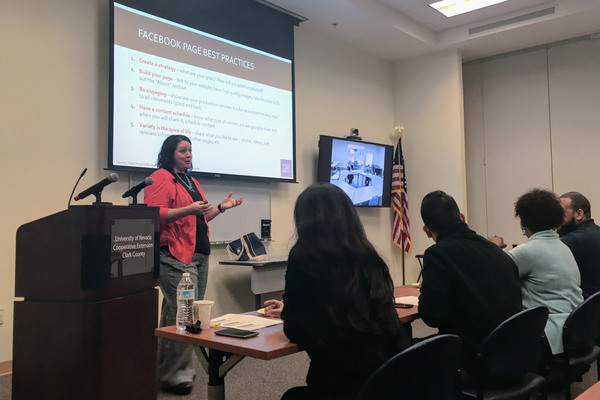
Lindsay teaching best practices for using social media to convey University research to the public. Photo by Ashley Andrews.
What is your contribution to the project?
I assist with social media engagement, obtaining pet food samples, and with whatever else is needed.
Why are you interested in working on this project?
I grew up on a ranch and our family always had pets too. Ensuring that both companion and food animals are receiving nutritious and healthy food is important to me and to my colleagues working on this project.
What is your favorite animal?
Oh, that is hard. I love horses but am a cat person, too.
Sarrah Dunham-Cheatham
Postdoctoral researcher, Department of Natural Resources & Environmental Science
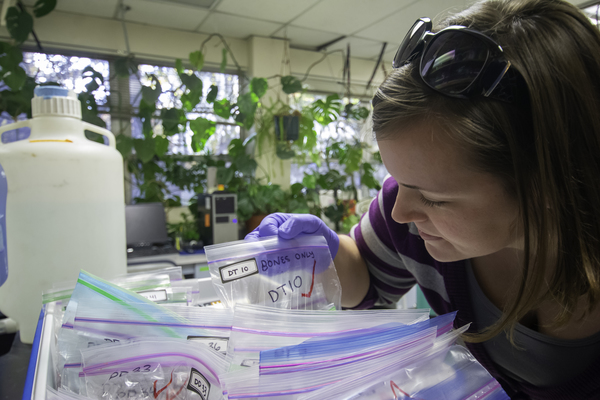
Sarrah in the lab processing pet food samples to test for toxic mercury. Photo by Robert Moore.
What is your contribution to the project?
I perform the methylmercury analysis, assist with project management and marketing, supervise sample processing and total mercury analyses, conduct data processing and interpretation, compile project results and publication.
Why are you interested in working on this project?
I am eager to be part of this project to help us, the pet owning and loving community, to better understand what we are feeding our beloved furry family members. I think it is important to know what is in a food product, including pet foods and treats, so consumers can make an informed decision when purchasing a product. The results of this project will help inform pet owners about potentially hazardous mercury concentrations and compounds in the products they feed their furbabies, as well as determine if the high-priced meat products plaguing the pet food aisles are worth our hard-earned money or are full of inexpensive filler. My pets’ health will benefit from the results of this project, and I hope that many others will, too!
What is your favorite animal?
I am a lover of all animals, from microscopic to giant, unique to common. Elephants captured my heart at a young age and are my lifelong favorite animal, but tardigrades and axolotls fascinate me. I am a proud mom of two tabby cats, Sarge and Cody, and two rescue mutts, Buddy and Chloe, and have had numerous cats and dogs throughout my life.
Adriel Luippold
Graduate research assistant, Department of Natural Resources & Environmental Science
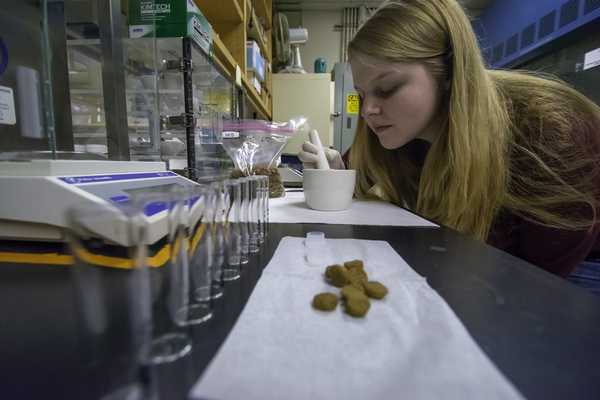
Adriel in the lab processing pet food samples to test for toxic mercury. Photo by Robert Moore.
What is your contribution to the project?
I collect and prepare pet food samples for total mercury analysis.
Why are you interested in working on this project?
I am fascinated by this project because it builds on an area of research that has not been explored very much at all. I worked on this topic as an undergraduate, and being a part of it going forward is very exciting and rewarding!
What is your favorite animal?
Rhinoceros
Margarita (Maggie) Vargas Estrada
Undergraduate research assistant, Department of Natural Resources & Environmental Science
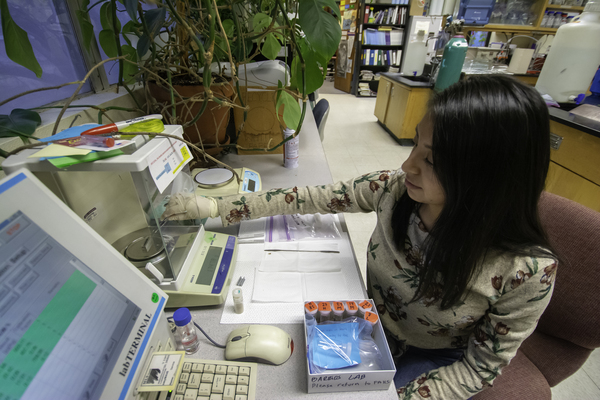
Maggie in the lab processing pet food samples to test for toxic mercury. Photo by Robert Moore.
What is your contribution to the project?
I process samples for total mercury analysis and assist with data processing.
Why are you interested in working on this project?
I am interested in working on this project because I was unaware of the presence of mercury in pet food, and would like to examine the concentrations. I am also interested in learning about the ingredients in pet food and if they are actually what they say they are. Though I am new to mercury research, I am excited to learn more about mercury and its effects.
What is your favorite animal?
I love all animals so I can't quite choose a favorite, but I always get excited when I see a dog because they all come in adorable shapes and sizes.












